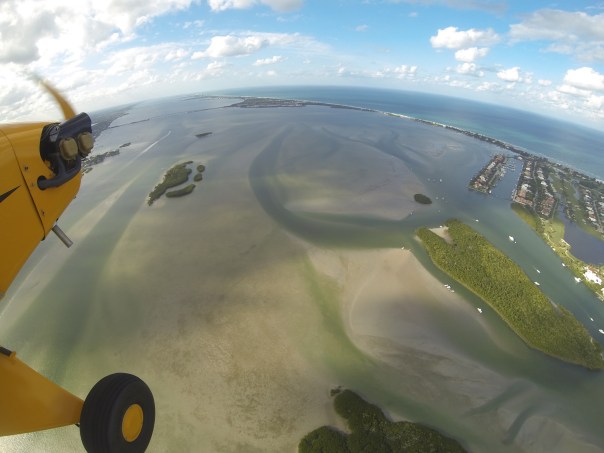
The photograph above is one of those rare images that tells you everything even without a caption. This photo, shared by my mother, historian, Sandra Henderson Thurlow, (http://www.sandrathurlow.com) was given to her by Mrs. Elizabeth Early, a pioneer of Stuart, “Stuart on the St Lucie.” The photo is entitled “Mosquito Ditch Digging,” and the subjects are unidentified. My mother believes the photo was taken in our region around 1920.

Mosquitos…such an integral part of Florida ~as is our war against them. Some have even gone as far to call the mosquito our “state bird.” As a kid, growing up in Sewall’s Point, in the 1970s, I remember having to run in place at the bus stop so as not to be attacked. Forever it seemed, I had white scars covering my tan scrawny legs. Another classic mosquito tale is gleefully riding my bike, along with my friends, behind the fog of the mosquito trucks. When we heard the trucks coming we ran from our houses, meeting in the street, quickly negotiating who got to be first behind the blower.
In any case, the mosquito ditches, the mosquito control districts, and the small green and white metal markers along Indian River Drive reading “MC” for Mosquito Control are not something we think too much about anymore, but for the old timers, mosquitos, and our war against them, and thus against Nature, defines this place.
My mother’s photos from her “Mosquito Control” file tell part of our local Martin County tale below. The lands are almost unrecognizable. In 1948 when the “Bridges to the Sea” were constructed over the Indian River Lagoon onto Hutchinson Island’s beaches – everything changed. The wetlands, the scrublands, and the old bean farms from early pioneers were ditched and diked, laced through and through like a pearl necklace. The government and owners organized with the goal to control those pesky mosquitos so the land would be fit for fill and for sale.
Over time, the mosquitoes lessened, and more and more people came to replace them.
According to my mother, some of the very early mosquito control worked by allowing fish into ditches to eat the larva; this not-so-intense mode was later replaced by other more stringent methods, including chemical means using DDT. As so often is the case in Florida, we are “successful,” successful at the expense of the environment.
Today we drive over the the Indian River Lagoon and forget the wars we’ve waged to live here, and instead, we wage a war to put our environment back into place.




Links:
“Large Swath of Dead Mangroves, but Why?” Blog that inspired toda’s post: https://jacquithurlowlippisch.com/2018/09/11/large-swath-of-dead-mangroves-but-why-slr-irl/
“Human Eradication of Mosquitoes, San Francisco, and the Destruction of the Indian River Lagoon: ” https://jacquithurlowlippisch.com/tag/mosquito-stuart-history/
UF/IFAS: http://mosquito.ifas.ufl.edu/Florida_Mosquito_Control.htm
Smithsonian: http://www.sms.si.edu/IRLSpec/Impoundments.htm
Martin County: Mosquito Conrol:https://www.martin.fl.us/MosquitoControl
Dept of Ag. & Consumer Services: https://www.freshfromflorida.com/Consumer-Resources/Health-and-Safety/Mosquito-Control-Directory




























